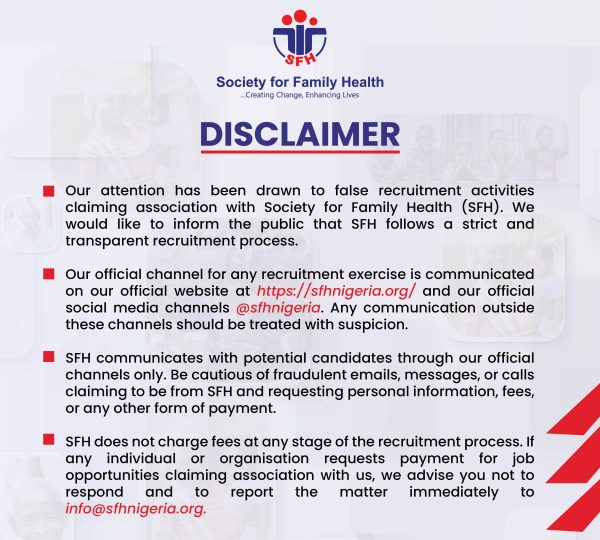Healthcare from Afar: Embracing the Telehealth Revolution for Universal Access
By Omileha Odey, Isibhakhomen Ikhimiukor and Abdulrazaq Abilagbo

Introduction:
The COVID-19 pandemic forced the healthcare industry to reevaluate its practices, leading to the recognition of telehealth as an indispensable solution. While telehealth is not a new concept, its roots can be traced back to the late 1950s and even earlier during the 19th century. Today, this revolutionary branch of e-health has evolved into a powerful tool that enhances patient participation, reduces healthcare costs, and ensures greater accessibility. In this article, we delve into the significance of telehealth in achieving Universal Health Coverage (UHC) and explore its remarkable benefits. Despite the challenges faced, telehealth is undoubtedly here to stay and transform the way we receive medical services.
Telehealth’s Contribution to Universal Health Coverage:
Telehealth plays a pivotal role in achieving Universal Health Coverage (UHC), which aims to provide high-quality healthcare to all individuals without financial barriers. By enabling remote access to health services, telemedicine empowers individuals to receive consultations and care without leaving their locations. This breakthrough technology addresses fundamental challenges in UHC, reducing inequalities and extending health coverage to people of diverse financial statuses.
Challenges Faced in West Africa:
While telehealth offers immense potential, certain challenges hinder its widespread adoption in regions like West Africa. The cost of implementing emerging technology can be prohibitive for smaller healthcare facilities. Additionally, poor technological policies, low literacy levels among patients, and cybersecurity risks pose obstacles to telehealth’s seamless integration. Addressing these challenges is vital to ensuring the benefits of telehealth are accessible to all.
The Benefits of Embracing Telehealth:
According to the latest Nigeria Demographic Health Survey [DHS 2018]), the use of any contraceptive method is higher among currently married women in urban areas (26%) than among those in rural areas (10%). This suggests women living in rural communities have reduced access to education which leads to lower incomes and standards of living. Appropriate use of telehealth infrastructure can provide access to women living in rural, remote or underserved areas where physical pharmacies may be non-existent. Leveraging telehealth technology can increase reproductive health coverage for women who are underrepresented in development outcomes and create sustainable health interventions.
Advocacy and sensitisation towards women’s health issues needs to be championed and telehealth services consequently presented as a potential solution. Education of the girl child especially in Northern Nigeria is still a prevalent roadblock facing women’s empowerment, hampering their ability to access higher earning outcomes for themselves and their families. Telehealth brings forth a plethora of advantages that revolutionise healthcare delivery. Patients can now keep appointments with doctors without leaving the comfort of their homes, reducing the spread of infections, and saving on transportation costs. This technological advancement also improves access to care, facilitates family follow-ups, eliminates the need to miss work for consultations, and provides solutions for childcare and eldercare challenges. Overall, telehealth offers unparalleled convenience, reduced waiting times, and cost-effective medical consultations.
Telehealth’s Bright Future:
With the continuous advancement of technology, telehealth is set to become an integral part of modern healthcare. Real-time information exchange, remote monitoring, and virtual consultations have already transformed patient-physician interactions. The Society for Family Health (SFH) exemplifies the positive impact of telehealth, engaging clients digitally through family planning projects and providing crucial healthcare services to millions. While telehealth does not replace face-to-face consultations, it complements traditional care and requires up-to-date equipment, trained staff, and adherence to telehealth laws for optimal results.
Unlocking the Potential of Telehealth:
One of the latest additions to the Society for Family Health is the E-pharma project, designed to provide essential health services to a broader audience. It focuses on transforming access & delivery of family planning products, services & information to Nigerian women through digital Innovation. One of the core objectives of this project is to bridge the accessibility divide for family planning products, in Nigeria. According to the World Bank, 22% of Sub-Saharan women still do not have access to contraceptive devices, severely limiting their reproductive choices to conceive and safely birth children.
During its activity year, it will be providing a Capacity building for pharmacists as well as the development of Digital tools that support in-person consultations with family planning patients. As a sensitive subject matter, contraceptive use is still frowned upon in many parts of the country. Issues such as religion, traditional beliefs and misinformation create stigma surrounding family planning uptake by women. A telehealth platform provides users with layers of anonymity which protects their identity and personal data. This online service will allow women the freedom to fully express their concerns in secret during client counselling engagements.
Telehealth services may solve this challenge facing women forced to travel several kilometres to access primary healthcare. Despite of limitations in connectivity and power telehealth has the potential to augment traditional reproductive health care and block many of the holes that have yet to be addressed. When women have the choice and access to engage in Family planning services, they can pursue more opportunities that ultimately enhance their quality of life. Telehealth’s benefits are vast, with various services tailored to meet specialised healthcare needs. Consumers can utilise wireless devices or the internet to access crucial health information and participate in informative discussion forums. Remote patient monitoring, primary care consultations, and specialist referrals are just a few ways telehealth revolutionises healthcare accessibility.
In conclusion, Telehealth has emerged as an indispensable tool in modern healthcare, transcending geographical boundaries and enhancing patient outcomes. By embracing telehealth, we move closer to achieving Universal Health Coverage, ensuring that healthcare services are available to all without exception. While challenges persist, the benefits of telehealth are undeniable, making it a transformative force that is undoubtedly here to stay. As we continue to navigate the digital landscape, let us seize the immense potential of telehealth to foster a healthier and more inclusive world.





